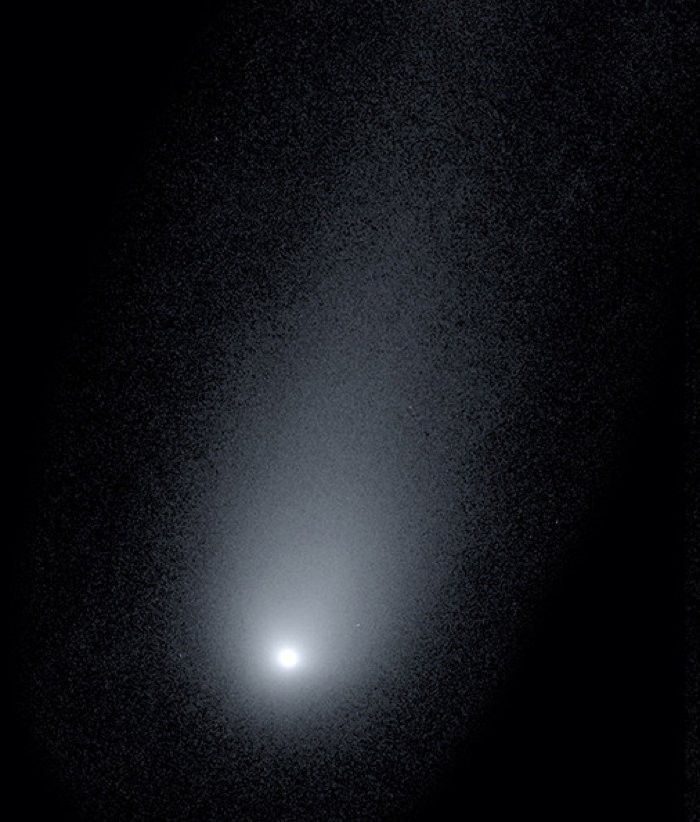New observations with the Very Large Telescope (VLT) of the European Southern Observatory (ESO) suggest that interstellar comet 2I/Borisov is one of the most “ virgins" never observed. Before passing close to the Sun, it had probably never encountered a star.
On August 30, 2019, amateur astronomer Gennady Borisov spots a comet that, it seems, shouldn't be there. He then informed the Minor Planet Center of the International Astronomical Union, which launched follow-up analyses. This work confirms the unusual trajectory of the object. Great news:this comet is not from us .
This new "visitor" from space is 2I/Borisov, named after whoever spotted him first. It is to date the second interstellar object ever cataloged in our system, after Oumuamua.
Other good news:while Oumuamua, which could be a piece of planet, was leaving our system, this comet arrives. Astronomers then seize this unexpected opportunity to analyze the object in more detail .
Very quickly, the first observations suggest that 2I/Borisov displays a composition quite similar to those of comets in our Solar System. In reality, it is very different.
According to two new studies (here and here) based on observations from Hubble and ALMA (Atacama Large Millimeter/Submillimeter Antenna Array), the coma of this comet (the atmosphere surrounding its nucleus as it approaches the sun) is distinguished by a large amount of carbon monoxide . However, in our system, the coma of comets is essentially composed of water .
These observations therefore suggest that the comet must have formed quite far from its star, in a very cold region (below -250°C). The object would then have been expelled from its system, but it is still unknown how (and we will probably never know).
At the end of a long journey of several millions, even billions of years, 2I/Borisov then presented itself to our Sun. And obviously, it was a real baptism of fire.

As part of a new study, the results of which are published in Nature communication, a team from the Armagh Observatory and Planetarium, in Northern Ireland, has supported by the FORS2 instrument of the Very Large Telescope (VLT), in northern Chile, to study the polarimetry of the comet (measurement of the polarization of its light).
The team found that 2I/Borisov had polarimetric properties distinct from those of comets in the Solar System, with the exception of Hale-Bopp, one of the most observed in the 20th century. This comet aroused a great deal of public interest during its passage through perihelion on April 1, 1997. Astronomers were surprised to find that this comet was one of the most pristine ever observed.
Before her most recent pass, Hale-Bopp is believed to have only encountered the Sun once. The comet had thus been virtually unaffected by the wind and radiation from our star. And, in fact, its composition was very similar to that of the cloud of gas and dust from which it formed about 4.5 billion years ago.
By comparing the data between the two comets, the team suggests that 2I/Borisov is even more pristine than Hale-Bopp. In other words, this comet had not rubbed against any star before its passage near the Sun in 2019 .
Bagnulo hopes that astronomers will have another, even better opportunity to study other interstellar objects before the end of the decade. The European Space Agency (ESA) is indeed continuing to develop its unprecedented mission to "intercept" a comet entering the Solar System. Its launch is planned in 2028 .